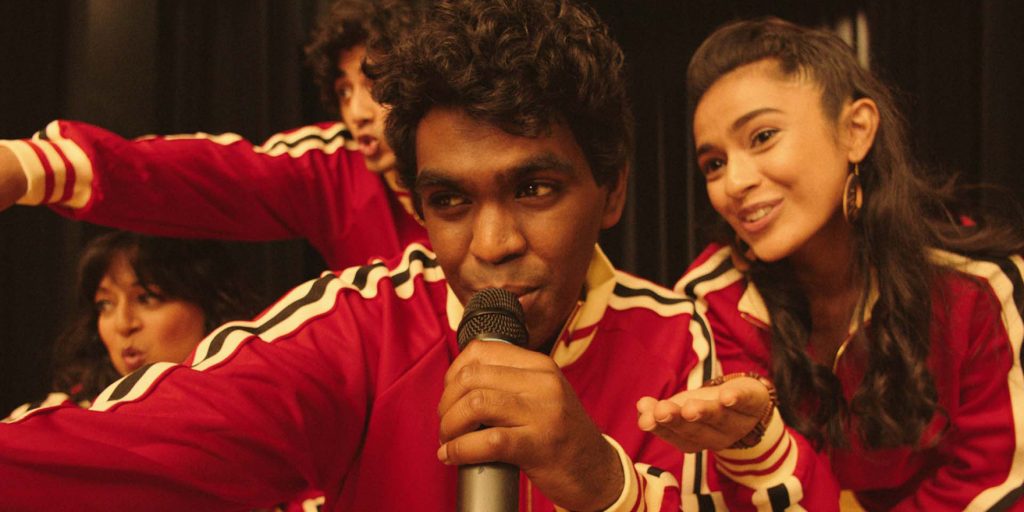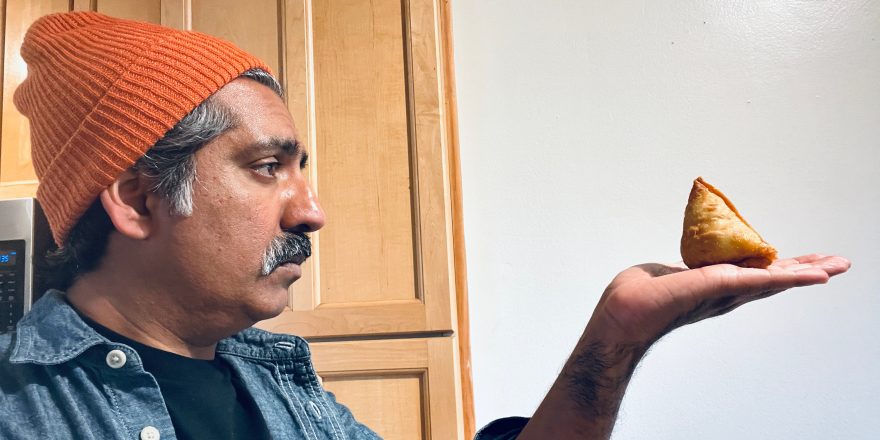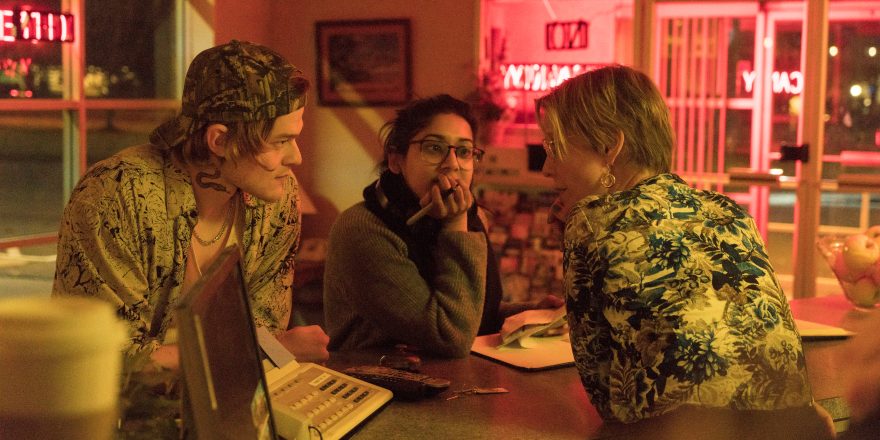When I first started writing my movie Four Samosas, a quirky heist comedy set in Los Angeles’ Little India, it was originally going to be called Four Ladoos.
“What the hell even is a ladoo?” I hear you say. Well, a ladoo is a dense, sweet lentil ball, and the word “ladoo” is sometimes directed at a person who may not be the sharpest tool in the box; someone who’s a little thick and heavy in mind, but hopefully still in possession of some endearing sweetness to make up for it.
It was pretty clear early on, though, that not many people outside of the South-Asian community would know what a ladoo was. So, in an act of generous inclusivity, I changed the title from Four Ladoos to Four Samosas, figuring pretty much everyone would at least know what a samosas was. Right? Not quite. I come from the U.K., where Indian food is now as prevalent as fish and chips. Indeed, even chicken tikka masala – which was actually concocted in England – hovers around the top of the list of the national dishes of England, so everyone there knows what a samosas is, whether they want to or not. In fact, samosas – like South Asians themselves – are everywhere in the U.K., from the school canteen to the high-end grocery store, Harrods included.
Of course, it wasn’t always like this. My parents would recount some of the verbal abuse they got about their “stinky” food when they first immigrated to the U.K. And as a kid growing up there, I remember my deathly shame when my parents would unfold pungent aluminum-wrapped, potato-stuffed Indian breads, usually at the most quintessentially of English places, like on a beautiful Lake District lawn, where one should really be snacking on a cheese-and-tomato butty. And I remember begging my dad to avoid packing anything in my school lunch that might contain even a whiff of our otherness, since I was on a delusional mission to convince everyone around me I was just like them, despite my brownness.
But that was then. Now in the U.K., there’s curry everywhere and on everything: on sandwiches, in pies, on chips. People are painting their walls with turmeric-hued colors and naming their children after exotic spices, and now it’s me that’s embarrassed for the white folks’ lack of orifical decorum in public spaces: “Oi, Brexit-loving, nationalistic party-supporting, anti immigrant-espousing fella, are you really gonna eat that lamb biryani and stink up this tiny train?!”
Here in the U.S., Indian food isn’t quite so in or on your face. It’s more of a sought-out experience. If you’re not actually of South Asian descent, then going out for an “Indian” is a bit of an elitist encounter that highlights your cultural openness and worldly bona fides. You’re in the know and ahead of the culinary curve about what is – let’s just face it – the best food in the world. For now in the U.S., Indian food still sits at the back of the food bus and finding a good curry can become a quixotic endeavor, desperately tilting Yelp reviews at obscure strip malls.

And so I’ve found myself at film festivals doing a quick perfunctory explanation of what a samosa is, for those who don’t know.
And to be clear, I don’t mind this; I’m happy to do my part in spreading the gospel of curry and hence the gospel of “us” South Asians. Because I do believe that food is the ultimate weapon of invasion. It’s the trojan horse an immigrant uses to sneak in and ransack the host’s hearts, souls and stomachs. Food becomes the gateway to an exhausted acceptance. Because once they fall in love with your food, the rest is a piece of cake. Or piece of ladoo. The cultural defenders may be weary and afraid of us taking over their castle, but if they want our food, they’re gonna need us to come in and cook it for them. And by the time they learn to cook it themselves, they’ll be over their initial fears and will now want us to teach them our dances, and their sons and daughters will be marrying our sons and daughters and we’ll just be so part of them and them part us that any attempt at deintegration will be a futile waste of energy.
Anyway, I digress. So, what the hell even is a samosa? Well, it too is like the trojan horse of an Indian meal. It’s often eaten as a starter, the first one in. It’s the gentle prelude before the main, merciless, delectable attack on your mouth.
It’s a deep-fried savory pastry and, like a ladoo, it’s also dense. The basic structural premise is that it’s triangular shaped, sometimes on the flatter side, sometimes more like a pyramid. It’s stuffed with different things; often peas and potatoes, sometimes spinach and Indian cheese, sometimes chicken or lamb. It can be eaten as a snack on its own or with some chutney sauces, or can be drowned in a layer of garbanzo bean curry and topped with yogurt.
Lots of cultures have their own variation of the stuffed savory pastry, like the Latin empanada or the British pasty. The flavors and the stuffings of these various pastries might be different, but the basic premise is the same: it’s a gift from one people to another, wrapped up in an edible golden box, it’s a multicultural sneak attack on hardened borders and hearts. A samosas is a gastronomic grenade that will blow us all together, rather than apart.
But if anyone actually calls you a “samosa,” you should definitely punch them in the face, because they’re saying you’re as dense as a ladoo, but with none of the sweetness. But actually, don’t do that. No punching, please.
Featured image shows Ravi Kapoor with a samosa!







